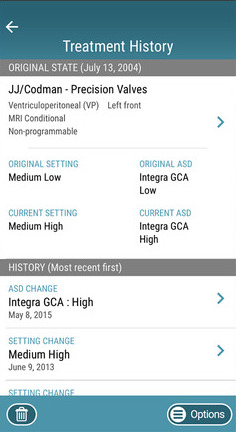 Researchers from Johns Hopkins Department of Neurology and Cincinnati Children’s Hospital Medical Center Department of Neurosurgery have developed an app for the Hydrocephalus Association, called HydroAssist.
Researchers from Johns Hopkins Department of Neurology and Cincinnati Children’s Hospital Medical Center Department of Neurosurgery have developed an app for the Hydrocephalus Association, called HydroAssist.
People with hydrocephalus, which is a condition caused by an abnormal accumulation of cerebrospinal fluid in the brain, can use the app, available on iOS and Android smartphones and tablets, to track and view their hydrocephalus treatment history.
The only way to treat hydrocephalus is through a surgery that inserts a device called a shunt in the brain. That surgery often needs to be repeated because it has a high failure rate. And as a result, the Hydrocephalus Association explained that patients with this condition have lengthy medical histories, which include a history of surgeries the patient has undergone. These patients often are afraid of traveling too far from their own provider in case there is an emergency, like an acute shunt failure, and a provider nearby does not have the medical history needed to treat the patient quickly.
“I believe that by empowering patients to become managers of their own medical histories with a little help from their physicians and technology, better care can be achieved even for patients that are not able to see the same provider every time,” Dr. Jesse Skoch, a pediatric neurosurgeon at Cincinnati Children’s Hospital, said in a statement.
The app allows users to manually enter their treatments, organize multiple treatments, and view a history of treatements that is sorted by procedure date. HydroAssist can share this data with other doctors in the case that the patients needs to be treated at a new facility. The app description notes that information is not stored on the cloud and instead the personal data is stored on the device.
Johns Hopkins, which has developed a number digital health tools in the past, recently announced the launch of another app, called EpiWatch, which is an app-based study developed using ResearchKit. The study, which could lead to the development of a seizure detector, makes use of the Apple Watch to collect sensor data they may help to track and sense seizures. The app will collect this sensor data along with information from surveys filled out by the patient or a caregiver to study duration, frequency, and types of seizures.


















